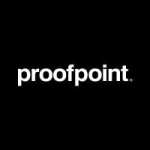What is our primary use case?
It transports rules from our mail system to their scanning mechanism.
It is a very straightforward solution. The mail just goes through their system. They scan it, and if there are any cases of cyber threats, then they will be stopped over there. We don't really feel the system. It is like fire-and-forget.
How has it helped my organization?
We have an organization which mostly uses mail to communicate. Today, there are a lot of social engineering attacks that go through vectors of sending you URLs to have phony websites for credential harvesting or a URL that will inject some kind of a payload into your browser. This system actually cleans it, blocks it, or alerts the user. This is what we find to be very good and how it protects our organization. We are not using the system per se; it is just protecting us. Think about it like going with some type of a shield that actually protects you.
In our case, we have a lot of mail traffic. So, we estimate something like 20 attacks a month. However, it really depends how your organization is targeted. If your organization is a target organization, you are probably going to have more attacks. This system will prevent you from being a victim of these types of attacks.
We have only had one false positive with Perception Point Advanced Email Security.
What is most valuable?
It keeps my emails safe. This is the main feature.
The solution’s effectiveness when it comes to detection is very good. It has a very good mechanism. It scans our emails. It identifies any threat or phishing attempts and phishing campaigns as well as any bad reputation, servers, or links, then it blocks them. This is what I find to be very good about this system. This is what we are always looking for.
What needs improvement?
Its websites for analysis need to be a bit more approachable for people who are less technical. Technically, it is a fire-and-forget solution. So, you want to be able to implement this solution for a lot of companies who don't have security operation teams (SOCs) behind them. You need to have something where a secretary can jump onto this console and release whatever she needs to release. Therefore, it needs to be written in a very specific non-technical language.
For how long have I used the solution?
I have been using it for three to four months - not very long.
What do I think about the stability of the solution?
It is very stable. There are no issues.
One person is needed for maintenance, e.g., if you need to release a false positive, but we haven't really had this experience yet. Otherwise, no one is needed.
What do I think about the scalability of the solution?
I presume Perception Point Advanced Email Security was built on a robust system where you can grow with it.
The users in our organization are my technical leader and me.
How are customer service and technical support?
The technical support team is very good. They are responsive and knowledgeable.
We are working with someone specific at Perception Point who is doing a very good job. This is important because if you have a false positive or something that needs further investigation, then you will need to use the Incident Response team. So, you want to have a very good connection with them.
The Incident Response team is very good at what they are doing when it comes to the incident responses. It is a very good company. I really recommend it.
Which solution did I use previously and why did I switch?
Our previous mail system, when it came to cleaning phishing links, was not very good.
We didn't switch. We added this solution as an additional security layer. The threat of a social engineering attack, crypto viruses, and all these URLs which will download something to your computer or will redirect for credential harvesting is becoming a bigger problem. People are attacking the human factor behind the computer, not the system itself. In this case, Perception Point Advanced Email Security is a good protecting layer for these kinds of attacks.
How was the initial setup?
The initial setup was a bit complex when it came to the transport rule, which was needed to create a 365 account on Microsoft. We did that with the Perception Point support team. They did this together with us. I would like this to be a little more accessible, explaining why they are doing this or put it into place.
Our deployment took half an hour to an hour. Configuration was required on Office 365.
After deployment, the solution started delivering value immediately, when it comes to stopping threats.
What about the implementation team?
We worked with the Perception Point support team. Together, we opened the console.
It took just one guy to set up the transport rule on Office 365.
What was our ROI?
Perception Point Advanced Email Security has helped to reduce the number of alerts received by our endpoint layer. It blocks the URL which downloads the payloads to the machines or is alerted that the URL is suspicious. Technically, it is preventing the payload from being downloaded to our machines, then the endpoint protection is not activated.
Because of the reduction in alerts, you don't need to start running around and checking each one of the computers to see what is happening or go into the console every now and then to check it. That is not happening, since you don't have anything to check. You are actually saving on your security team management. This has saved us a couple of hours.
It's very difficult to find return on investment when it comes to security mechanisms, because there is no return on investment until something happens. If you have a crypto virus where someone will ask you for ransomware of a million dollars, this is your return on investment. We are trying to eliminate the option for this. When you come upon this ransomware, it is already too late. So, it's very difficult to calculate the ROI on this.
It is more of an insurance policy. However, in insurance, you still have your personal fees as well as a fee if something happens, where you take part of the damage upon yourself. I think this solution is more robust and bulletproof.
What's my experience with pricing, setup cost, and licensing?
When compared to other solutions on the market, it is relatively fair.
Which other solutions did I evaluate?
We used other solutions, like IronPort, and decided to add an additional layer.
What other advice do I have?
I would advise someone, "Go and do it."
This solution is a security layer that needs to be done or implemented in any organization because of the risks that people have today when it comes to attacking human factors. This is a good blocking solution for these attack vectors.
We are considering right now to extend the solution to SharePoint and OneDrive. We are looking for the budget.
I would rate this solution as a 10 out of 10.
Disclosure: PeerSpot contacted the reviewer to collect the review and to validate authenticity. The reviewer was referred by the vendor, but the review is not subject to editing or approval by the vendor.



















